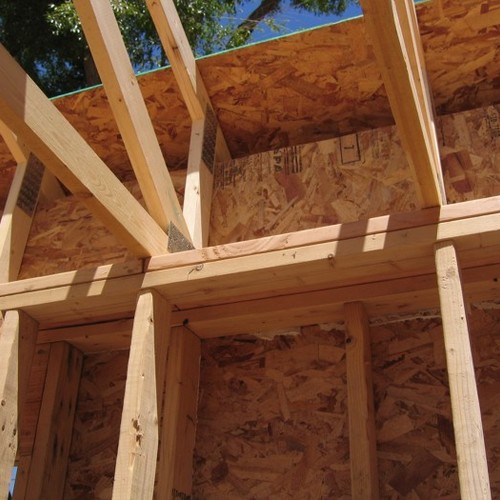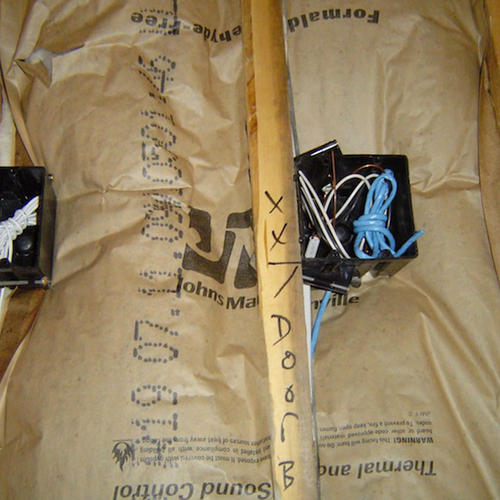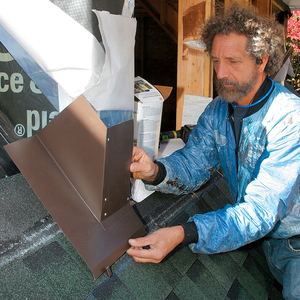
In Meaford, Ontario, a company called Third Line Homes recently developed a residential neighborhood called TerraceWood. Some of the new homes were offered for sale in 2016, and construction continued for several years, until at least 2018. The homes weren’t cheap; one of the homes was sold in 2017 for $790,000 (Canadian dollars).
According to a 2021 lawsuit, at least 14 of the new homes had serious construction defects. While Third Line Homes apparently made a few attempts to fix these problems, the pace of repairs was slow. Frustrated with the lack of progress and the seriousness of the defects, the homeowners turned to Tarion, a nonprofit consumer organization established by the province of Ontario to protect the interests of purchasers of problematic new homes. Fulfilling its mandate, Tarion began repairing the defective homes at Tarion’s expense. Somewhere along the way, Third Line Homes went out of business.
In hopes of recouping its expenses, Tarion sued Third Line Homes in December 2021. Tarion alleged that the parties responsible for the construction defects include the two principals of Third Line Homes (Mary-Jo Osborn and Paul Osborn) and the municipality of Meaford, Ontario. According to the CBC article, “Tarion alleges the Municipality of Meaford failed to perform adequate home inspections.”
Until the courts resolve the lawsuits, it’s unclear who is most responsible for this mess. But the construction defects at TerraceWood included serious safety issues. Some repairs required homeowners to vacate their homes for a full year, and at least three homes were so shoddily built that Tarion decided that the homes would need to be demolished instead of repaired.
The demolition of these three TerraceWood homes made journalists and builders sit up and pay attention. Clearly, this residential development was a major disaster.
Construction defect clusters
It turns out that similar construction defect clusters have been happening for decades. Consider, for example, the following three clusters from the mid-1990s:
• The EIFS failures in North Carolina;
• The so-called Leaky Condo Crisis in British Columbia;
• The Zaring Homes failures in Cincinnati (wall rot caused by inward solar vapor drive).
Construction defect clusters have continued into the 21st century; in the early 2000s, there was a rash of moisture problems in stucco-clad homes in Minnesota.
In many such cases, including the recent Ontario cases, the builder goes out of business before the problems are resolved—guaranteeing that the only winners will be the lawyers.
What went wrong?
The first question we need to answer is, “What were the defects?” The TerraceWood homeowners have alleged that their homes have the following problems:
• Major structural issues (for example, wrong-sized beams)
• HVAC issues (i.e., a “deficient heating system” that “needed to be replaced”)
• Improperly installed roofing
• Improperly installed siding
In addition, several homeowners complained of “water leakage” and “mold problems due to water leaks.” (It’s unclear whether the water leakage was due to the improperly installed roofing, the improperly installed siding, or the “HVAC issues.”)
The listed defects are unfortunately vague. It would be nice to know exactly what these defects were, but (a) many homeowners aren’t qualified to describe the technical cause of the failures, and (b) in light of the ongoing litigation, most of the homeowners aren’t talking to the press.
What can we learn from these failures?
Builders who want to stay out of court will be interested in any lessons they can learn from the TerraceWood failures. Here’s what I notice:
• The listed failures are, for the most part, common problems.
• The listed failures are avoidable.
The basic takeaway: details matter. To get the details right, builders need to understand all aspects of their profession, which takes study and an understanding of building science principles. Builders who cut corners may end up in court, bankrupt, or both.
“Major structural issues”
Of all the allegations made in Ontario, the most unusual is “major structural issues.” Fortunately, problems like beam undersizing are rare. In North America, it’s especially rare for a recently built house to have a structural issue that is so serious that the best solution is to demolish the house.
That said, if you can imagine a mistake, somewhere a builder has made it. If you’re a builder who doesn’t understand structural issues, hire an engineer and follow the engineer’s advice. If you are sizing a carrying beam, don’t guess. Needless to say, joist hangers, rafter clips, and seismic tie-downs (if specified) aren’t optional.
“HVAC issues”
We don’t know what type of “HVAC issues” occurred in the Ontario houses, nor do we know why at least one heating system had to be replaced.
But we do know that many—perhaps most—residential heating and cooling systems in North America are poorly designed, poorly specified, and poorly installed. If you’re a builder who wants to stay out of court, you absolutely need to study up on heating system design, cooling system design, and common HVAC system problems.
Green Building Advisor has published plenty of articles on the most common problems with residential HVAC systems. These problems include:
• System oversizing due to failure to perform an accurate Manual J calculation;
• Specifying single-stage equipment where modulating equipment would provide better comfort;
• Poor duct system design and installation (for example, installation of ducts outside of a home’s thermal envelope; installation of a duct system with excessive static pressure on either the supply side or the return side; installation of a duct system that fails to deliver proper air flow to each room; and failure to seal duct leaks);
• Failure to provide a ventilation system that meets minimum code requirements.
If you are depending on the expertise of your HVAC subcontractor to keep you out of trouble, you’re walking a dangerous tightrope.
Here are some articles you may want to read:
• Still Fighting the Same Battles, 20 Years Later
• Solutions to the Attic Duct Problem
• More Bad News on Ventilation System Effectiveness
• Who Can Perform My Load Calculations?
• Forced-Air Systems With Room-to-Room Temperature Imbalances
• Fixing Energy Star Version 3
“Improperly installed roofing”
There are lots of ways to mess up a roofing job, but the most common roofing errors are flashing errors. If you hire a roofer, don’t assume that your roofer is a flashing expert. If you’re a builder who wants to stay out of court, it’s your job, not the roofing sub’s job, to understand what types of flashing are required on your roof, and how this flashing needs to be installed.
At a bare minimum, make sure that your roofs include:
• Drip edge at the eaves and rakes;
• Roofing underlayment;
• Ice & Water Shield as required by code;
• Properly installed flashing at plumbing vent penetrations;
• Properly installed flashing at chimney penetrations;
• Step flashing or sidewall flashing at dormer cheeks and wall intersections;
• Kickout flashing where required.
All of these types of flashing depend in part on overlaps to keep water where it belongs, and these overlaps need to meet certain minimum requirements. Undersized flashing or poorly lapped flashing can leak.
For more information, see these three articles:
• All About Roof Flashing
• Kickout Flashing: Often Overlooked and Under Appreciated
• Step Flashing With Exterior Insulation
“Improperly installed siding”
It’s clearly possible to do a bad job of installing siding. But I’m guessing the failures in Ontario would have been avoided if the builder had included two details:
• A rainscreen gap between the siding and the water-resistive barrier (WRB);
• Proper flashing at wall penetrations, including windows and doors.
Of course, installing a rainscreen gap adds to the cost of construction. Is it money well spent? Absolutely.
For more information on siding, wall flashing, and rainscreens, see these articles:
• All About Rainscreens
• All About Wall Rot
• All About Flashing
• How to Flash an Exterior Door
• Sill Pans for Exterior Doors
• Window Installation Done Right
“Mold problems”
If you just sold a new house to a happy family, you don’t want the homeowners to find mold. Moldy materials are a sign that the materials are damp.
The defective homes at TerraceWood appear to have had water entry problems. Water stains on ceilings or walls usually indicate problems with roofing, roof flashing, siding details, or window flashing. If these water leaks continue for a while, many common building materials, including drywall, will grow mold. The solution, of course, is to stop the water entry.
It’s also possible that a home can have a chronic problem with high indoor humidity due to occupant behavior or a defective ventilation system. While builders can’t control occupant behavior, they can minimize the chance of indoor humidity problems by installing an adequate ventilation system.
For more information on these issues, see these articles:
• Common Sense on Mold
• Preventing Water Entry Into a Home
• Revisiting Ventilation
Celebrity endorsement
There is one more wrinkle to the construction defect cases in Meaford, Ontario: the houses were promoted by a Canadian television celebrity named Mike Holmes, who gave permission for his photo to appear in a TerraceWood advertisement, along with this quote: “Very proud to have bought the very first home in Third Line Homes’ TerraceWood community in Meaford. They’re building healthy Holmes Approved Homes. I love it.”
Curious readers might wonder, “What is a ‘Holmes Approved Home’?” The answer can be found on one of Holmes’ websites, where this explanation can be found: “All Holmes Approved Homes go through unbiased, 3rd party inspections. Our Mike Holmes Inspections team consists of only the most qualified, experienced building inspectors. Each inspector is a licensed Level 1 Thermographer meaning our inspectors are trained on the most advanced technology and specialized equipment to conduct the most comprehensive assessment of your home’ major systems and components. Our Mike Holmes Inspectors use a customized checklist for all Holmes Approved Homes, to address any deficiencies in the various stages of construction so our home builders can fix those at the right stage of construction.”
That’s great—the inspectors will “address any deficiencies in the various stages of construction.” That should cover everything!
Inevitably, Mike Holmes was named as one of the defendants in the current litigation. According to the previously cited CBC article, Tarion alleges in its lawsuit that “The Holmes Group [Mike Holmes’s company] misrepresented Third Line Homes as a competent builder to the TerraceWood homeowners. … In its statement of defense, The Holmes Group claims it ‘made no representations’ to anyone regarding the TerraceWood project and, in fact, ‘had no involvement whatsoever’ with the project.” Hunh?
The last lesson of this mess isn’t a lesson for builders—it’s a lesson for celebrity endorsers. If you want to stay out of court, don’t endorse the construction quality of homes with which you have “no involvement whatsoever.”
— Martin Holladay is a retired editor who lives in Vermont.
Weekly Newsletter
Get building science and energy efficiency advice, plus special offers, in your inbox.














14 Comments
One bit of advice: Respond to all your warranty calls promptly and in a very friendly manner--even if they come after the warranty period has expired. I worked as an expert witness for construction defect claims. I heard one consistent complaint, "The builder would not respond." And this to very minor complaints, such as a front door that did not close properly. Once the home buyers got irritated enough, they called the law firm I worked for. The lawyers could make no money from small, easily-repairable items, so they called me, and I assembled a team of experts, and we went into the subdivision, house-by-house until we had identified enough construction defects to support a multi-million dollar lawsuit. We always won because builders usualy make mistakes. To avoid this in my work, I make sure the homeowner never calls the lawyer by taking care of the little, irritating complaints--all of them.
Good advice!
Your list of construction defect clusters omitted the houses built in New Orleans after the flooding under the endorsement of Brad Pitt. One of my take-aways would be to avoid any development associated with a celebrity.
Malcolm,
Yes, you're right -- I did leave out the New Orleans cluster. Here are three GBA articles on Brad Pitt's Make It Right Foundation:
"Make It Right Foundation Faces a Lawsuit"
"Brad Pitt’s Foundation Sues Architect"
"How Brad Pitt’s Green Housing Dream Became a Nightmare"
I avoid celebrity endorsed or "approved" contractors, unless I have seen their work and come with known referrals. It's just another expense they have to add to the job to cover the fees with no benefit. It's not like Mike Holmes or Bryan Baeumler is going come and fix any screw ups.
'Celebrity Contractors' should include some of the more popular social media building science 'experts' who seem to talk the talk but not walk the walk. Had to do over 50K of structural corrections and $$$$ in other fixes when I hired someone to build my house based on his presence in this community.
Can someone please update this fool's Wikipedia page to reflect this? https://en.wikipedia.org/wiki/Mike_Holmes Brad Pitt is probably a naive fool but it's not like he presents himself as a construction expert. Mike Holmes, like many youtube DIY/celebrity builders, is full of sh**, which makes this much worse. The whole low-budget Bruce Willis act is just pretty sad... I'm sure the guy has some building experience, but people who present/act that way tend to get laughed off of real construction sites unless they, gulp, inherited the company from Daddy.
Anyone can edit Wikipedia, so have at it.
I get the impression that Holmes does have a lot of construction experience. However, having dealt with a lot of construction people, that in and of itself lends zero to his credibility. His attitude is typical, in which he has supreme confidence in commenting on things he probably has only a small amount of real knowledge about. I can recall a specific bit where he was talking about sound proofing, and it was full of commonly held myths. His main schtick is to shit-talk the work of other builders and say how he would have done it perfectly; I'm sure it's all scripted, but it's presented as if he's seeing the results for the first time, and knows instantly what should have been done instead.
I don't know about him inheriting anything from daddy, but it appears his son will inherit it from him.
I'm a bit sorry my comments seem to have lead the discussion towards the (well deserved) condemnation of celebrity builders and away from the comprehensive and very useful advice the article contains.
I suspect it was coming eventually regardless. It's a part of the story.
I'll restate my comment as to why I avoid celebrity endorsed contactors. I'm sure that while there are many good contractors that use the celebrity endorsement for lead generation, the endorsement is no guarantee of quality work that the endorsement implies. The one thing it does guarantee is an extra overhead cost that the contractor needs to recover in fees.
Don't be sorry! I live in Ontario Canada and have been watching Mike Holmes shit for decades, there is a real lesson here. Surprisingly this episode doesn't seem to have hurt him at all.
"been watching Mike Holmes shit for decades"--hopefully you don't mean the scatological way of interpreting that sentence! ;-)
Living on the US side, I'd never heard of Mike Holmes. I looked him up and the irony is that much of his schtick seems to be about addressing shoddy construction.
Within jogging distance from my house just south of Boston, last fall I noticed dozens of large boom lifts working on a 4-year-old 350-units "luxury" apartment complex. They were ripping all of the buildings’ siding, sheathing and insulation and even some balconies due to widespread water intrusion. It was causing all kind of issues in apartments that people rent for $3 to $5k a month. Previous repair attempts had failed. It was quite a sight and a good lesson about the merits of proper flashing, particularly in waterfront areas. I tipped a local reporter who ended up writing a story about it -link below may be behind paywall.
There is a big ongoing class action lawsuit about it involving tenants, designer, builder and developer.
https://www.bostonglobe.com/2023/12/27/real-estate/tenants-file-class-action-suit-against-meriel-marina-bay-complex/?p1=BGSearch_Overlay_Results
Log in or create an account to post a comment.
Sign up Log in